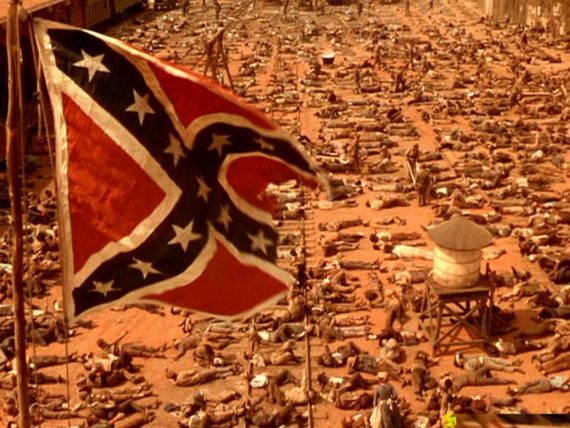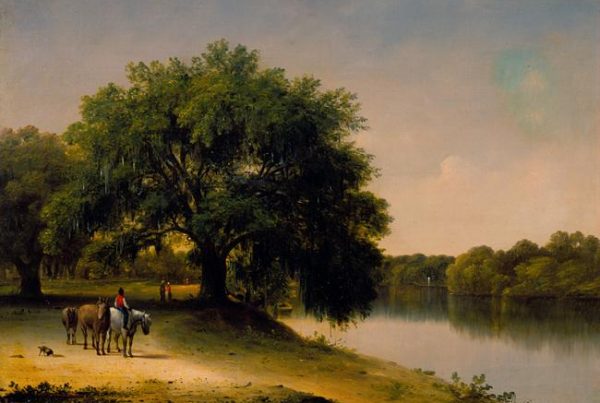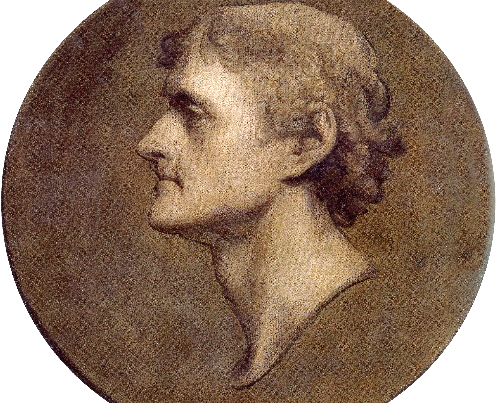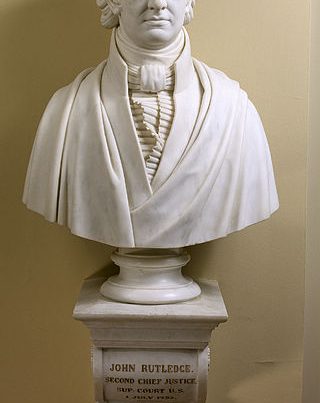
The tiny hamlet of Lake Hill in New York State’s Catskill Mountains was my mother’s hometown, and her ancestors there, the Howlands, could trace their family history to its roots in Fifteenth Century England and to Bishop Richard Howland of Peterborough who officiated at the burial of Mary Queen of Scots in 1587. During the next century, Henry Howland sailed to the Plymouth Colony in Massachusetts in 1623 to join his brother John who had landed there three years earlier aboard the “Mayflower.” Some of Henry’s descendants then made their way across New England to the Mid-Hudson Valley where Edward Howland arrived in Lake Hill during the early part of the Nineteenth Century. In 1910, Edward’s granddaughter Madge met and married a young Virginian named Julius Augustus Simpson who had just made his way north from Aldie in Loudoun County. The young man, who most in the family always called Uncle Jules, established Lake Hill’s only general store and later became its postmaster. As a child, I greatly enjoyed the tales Uncle Jules told me of his father’s exploits as a Confederate soldier during the War Between the States. Few in the family actually believed those tales, but many years later while researching my various family histories, I found that Uncle Jules’ stories were all true.
His father, Samuel Leyton Simpson, enlisted “for the war” on August 13, 1861, as a private in the “Quantico Guard,” which became Company “B” of the Forty-Ninth Virginia Volunteer Infantry Regiment under the command of Captain Chancellor Nelson. The Regiment was part of “Stonewall” Jackson’s Second Corps and participated in virtually every major battle fought by the Army of Northern Virginia. Simpson was wounded three times during the War, first during the third day of fighting on Culp’s Hill at Gettysburg, next in the third Battle of Winchester and finally during the Battle of Sayler’s Creek just a few days before he and the handful of those still remaining in the Forty-Ninth Regiment surrendered with General Lee at Appomattox. After his parole, Simpson returned to his small farm in Aldie, was married in 1872, had seven children and died in 1891 just two years after receiving a twelve dollar a year Confederate disability pension from the State of Virginia. My research also revealed that Simpson’s brother-in-law, Dr. William Jordan Luck of nearby Middleburg, had enlisted three months earlier in the same Virginia Regiment as an assistant surgeon. Dr. Luck had taken part in the War’s first major engagement at Manassas a month later as a member of the Fifth Brigade under the command of Colonel Philip S. Cocke, one of the eight brigades in Brigadier General P. T. G. Beauregard’s Army of the Potomac.
During the afternoon of June 21st, Cocke’s Brigade, including Dr. Luck and his medical staff, was sent in support of Colonel Thomas Jackson’s First Brigade, one of the units from Brigadier General Joseph E. Johnston’s Army of the Shenandoah that was holding Henry Hill against a determined Union assault. Near Cocke’s Brigade on that hill was Brigadier General Barnard Bee’s Third Brigade and moments before being mortally wounded, the South Carolinian shouted to his wavering troops, “There is Jackson standing like a stone wall. Let us determine to die here, and we will conquer . . . rally behind the Virginians.” Jackson’s stand that day not only helped to turn the tide of battle and win a major Confederate victory, but it forever made “Stonewall” an inseparable part of his name.
Unlike Private Simpson, Dr. Luck did not remain with the Forty-Ninth Virginia throughout the War, but saw a great deal of rather varied field and hospital service with a number of units. After the Battle of First Manassas and through most of the following year, Dr. Luck was placed on successive temporary medical duties with three Virginia Light Artillery companies, the first being a short term with Captain B. H. Motley’s Pittsylvania Company. When this unit was disbanded in late 1861, Luck was transferred to Captain William Nelson’s Hanover Light Artillery Company. This unit was reorganized in April of 1862, with Luck then being posted for duty with Captain Thomas Jefferson Page’s Magruder Light Artillery. Captain Nelson was later promoted to colonel and placed in command of the artillery units in Major General Jubal Early’s Army of the Valley.
Page’s Company was finally disbanded in the latter part of 1862 by order of General Lee’s chief of Artillery, Brigadier William N. Pendleton, with the Company’s men and equipment being transferred to various batteries within the Army of Northern Virginia. Captain Page was promoted to major and died in action at Petersburg in June of 1864 with his remains being transferred to Italy where they were placed in his father’s tomb at the Città Metropolitana Di Roma Capitale. Page’s father had been a captain in the Confederate Navy and in 1865 was put in command of the French-built ironclad “CSS Stonewall,” the powerful ram that failed to reach the Confederacy before the end of the War and was ultimately sold to Japan. The senior Page, the grandson of a signer of the Declaration of Independence, immigrated to Argentina after the War and was later sent on a diplomatic mission to Italy by that country. He and his family lived the rest of their lives in Rome and one of his cousins, Thomas Nelson Page, was made ambassador to Italy by President Woodrow Wilson.
After Dr. Luck left Captain Page’s Company, he served for a while as a surgeon at General Hospital No. 1 in Lynchburg, Virginia, and then was assigned to temporary duty with the First Virginia Cavalry, one of the units that had helped to shatter the Union lines at the First Battle of Manassas under the command of Brigadier General J. E. B. Stuart. It was while he was with the First Cavalry that Dr. Luck met and became friends with Colonel John Singleton Mosby who commanded the Forty-Third Virginia Cavalry Battalion, better known as Mosby’s Rangers, with Mosby himself being called “the Gray Ghost of the Confederacy.” Then, on October 2, 1863, under Special Order No. 5 from Medical Examiner Archibald M. Fauntleroy, Dr. Luck was transferred as assistant surgeon to Captain Edward Graham’s Petersburg Battery, a unit in Major General Stuart’s Horse Artillery, a post he held until almost the end of the War.
Dr. Luck joined the Petersburg Battery at the North Carolina town of Hamilton on the Roanoke River where it was then serving in the Department of North Carolina under the command of Major General Daniel H. Hill. Shortly thereafter, a major offensive was being planned for North Carolina that was to be led by Major General Robert F. Hoke, and with Lieutenant Colonel James G. Dearing being named to lead a mobile strike force made up of Virginia and North Carolina cavalry and horse artillery units, including Graham’s Battery. While in this battalion, Dr. Luck also saw some temporary medical duty with the Fifth North Carolina Cavalry, a regiment that had recently been part of General Stuart’s screening actions prior to the Battle of Gettysburg and had seen some fighting in the Loudoun County towns of Middleburg and Aldie, the home towns of Dr. Luck and Private Simpson,
Before the planned offensive, Graham’s Battery was reassigned to Major General George Pickett’s troops which were on routine guard duty along the Wilmington and Weldon Rail Road, a vital supply route for the Richmond and Petersburg areas. The Battery saw little action until the following spring when it took part in the Confederate victory at Plymouth, North Carolina, on April 20, 1864. In that battle, Sergeant Francis W. Powell, the nineteen year old son of the Middleburg doctor under whom Dr. Luck had trained, was killed when a Union shell exploded above the artillery piece Sergeant Powell was commanding. There was also some fighting later around the nearby Great Dismal Swamp when Union troops swept through the area on a number of raids in which they burned and looted local homes. Dr. Luck wrote of one engagement where seventy-five men from the U. S. Colored Troops were killed when they were deliberately sent into action in front of the other Union units to, as Luck wrote to a friend, “face the torrent of our bullets.” In his letter, Dr. Luck used the term “smoked Yankees” in referring to the U. S. Colored Troops and while most historians now cite the term as originating with the Spanish in describing black American soldiers during the Spanish-American War, Luck’s letter shows that it had actually been used first in the War Between the States.
Two months later, while Lee and Grant were battling north of Richmond, Major General Benjamin Butler’s army was advancing on Petersburg south of the capital. As Petersburg was then held by only a few companies made up of young boys, old men, hospital workers and prison inmates, troops from North Carolina, including Dearing’s Brigade, were rushed to the city’s defense. After a series of battles around Petersburg in which the Brigade played a prominent role, Butler’s forces were driven back and effectively bottled up in the Bermuda Hundred, a peninsula east of Petersburg between the James and Appomattox Rivers and as Dr. Luck later wrote, “Dearing’s Cavalry and Graham’s Battery saved Petersburg from ashes.” Even though Butler’s forces had been stopped, Grant’s army soon invested Petersburg and began the siege of that city which was to last until the end of the War the following year.
A field hospital for Dearing’s Brigade was then established, and there Dr. Luck would remain on duty until February of 1865 when he rejoined his old unit, the Forty-Ninth Virginia Regiment, then in the lines at Petersburg as its surgeon during both the final battles around the city and those in General Lee’s retreat towards Appomattox. While at Petersburg, Dr. Luck had become a close friend of a member of Colonel Dearing’s staff, Captain John Coles Rutherfoord, the son of a former Virginia governor, and was best man at Rutherfoord’s wedding. The captain, who had been a member of the Virginia General Assembly for twelve years prior to the War, joined the Tenth Virginia Cavalry as a private but his leadership abilities were soon recognized and he quickly rose through the ranks. Rutherfoord survived the rest of the War and took part in the surrender at Appomattox.
At the end of October, Dr. Luck was finally given a month’s furlough and when he returned to the Brigade in December, he was promoted to head surgeon. Shortly after his return to Petersburg, a Union cavalry attack broke through the Confederate lines, with some of the troopers reaching Luck’s field hospital. Just as one of the cavalrymen was attempting to capture the hospital’s red flag, Dr. Luck confronted him and, as he wrote to a friend, “ A Yankee trooper grasped the flag and rendered it in half. Running from my tent, I drew my pistol and killed the enemy.” After the War, the torn, blood-stained banner became part of Dr. Luck’s wartime collection and was always displayed in his Middleburg office.
When the last battle was fought at Petersburg on April 1, 1865, General Lee evacuated both Petersburg and Richmond the following night and while President Davis and those in the government headed west, Lee moved the Army south toward North Carolina in an effort to join forces with General Joseph Johnston. A series of battles were fought during the following week, with the remnants of Lee’s Army suffering a major defeat at Sayler’s Creek on April 6th in which over eight thousand Confederates were killed, captured or wounded, including Private Samuel Simpson who was shot in the jaw and more than likely treated by his brother-in-law. The final curtain of the tragedy fell three days later for both Dr. Luck and Private Simpson when they, along with the other eight officers and forty-four enlisted men remaining in the Forty-Ninth Virginia Regiment, surrendered with the Army of Northern Virginia at Appomattox Court House.
After his return to Middleburg, Dr. Luck opened a medical office there and continued in private practice until his death on December 3, 1906. Besides his medical work, Dr. Luck also maintained an extensive collection of wartime memorabilia that consisted of items he had obtained himself during the War, such as the torn hospital flag and part of the uniform General “Stonewall” Jackson was wearing when he died on May 10, 1863, after the Battle of Chancellorsville, as well as items that Luck had obtained following the War. Among the latter was a Mexican officer’s belt buckle that General Jackson had brought back with him from the Mexican War and had reportedly worn during the first Battle of Manassas, a militia shotgun that had been carried by his friend Colonel John Mosby and an original photograph of Mosby with his wartime scout, Lieutenant John S. Russell, taken many years after the War. On the photo someone had mistakenly written Dr. Luck’s name over Lieutenant Russell’s image and the year 1915. A 2011 article in the Northern Virginia Daily gave an account of an estate auction in Middleburg at which the Jackson belt buckle, Mosby’s shotgun and the photograph were sold, all still bearing a Luck label. The article also stated that Mosby had visited Dr. Luck’s office in Middleburg during the early 1900s to confer with Luck and view the items in his collection.






